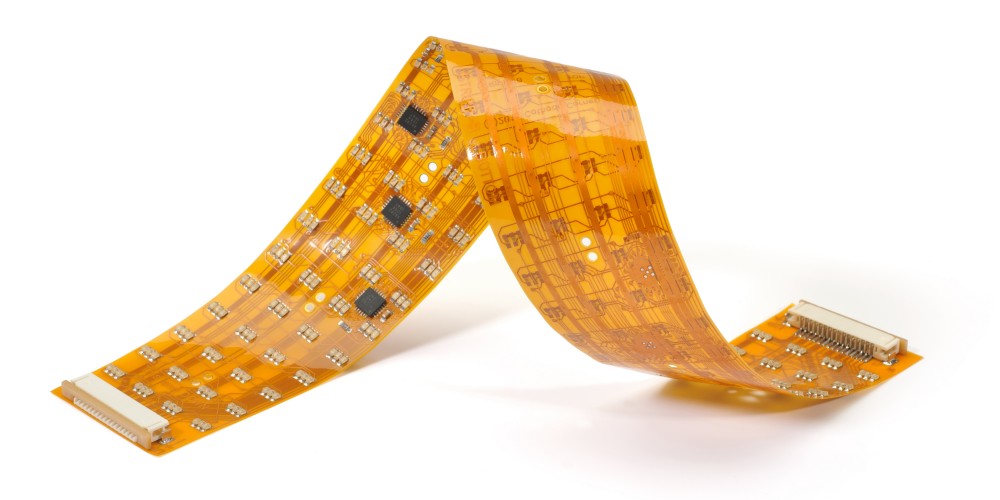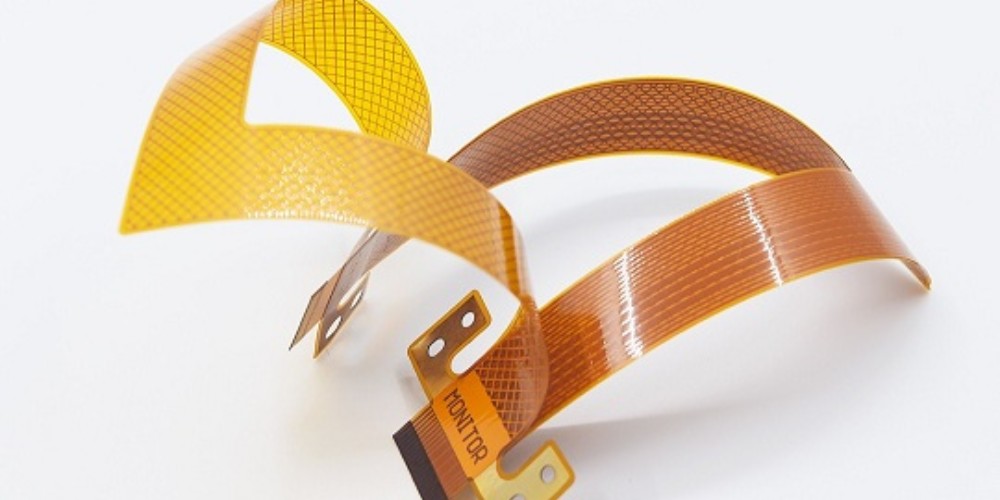Flex PCBs, also known as flexible printed circuit boards, are printed circuits that are flexible and durable enough to bend and flex repeatedly. They are used in a variety of electronics where flexibility is required, like wearables, medical devices, consumer electronics, automotive electronics, and more. Buying cheap flex PCBs can help reduce costs in your electronics projects or products, but it’s important to still get quality that meets your requirements. This guide will cover tips for sourcing low-cost flex PCBs while avoiding potential issues with going too cheap.
What Are Flex PCBs and Their Key Characteristics?
A flex PCB is made of flexible insulating substrate materials like polyimide instead of traditional rigid FR-4 material. The circuits are printed on the flexible material using copper traces, allowing the board to bend and flex without damaging the connections.
Some key characteristics of flex PCBs are:
- Flexible – Can bend and twist repeatedly without cracking
- Durable – Withstands vibration, shock, moisture and temperature changes
- Thin and lightweight – Can conform to tight spaces and portable devices
- Reliable connections – Flexing does not break copper traces like it would on rigid boards
- Complex shapes – Can be bent and folded into 3D configurations
Flex PCBs vary in the number of conductive layers (1-8+), minimum bend radius, thickness, and other specs based on the design requirements.
Cost Considerations for Flex PCBs
When looking for cheap flex PCBs, it’s important to understand the general cost structure:
- Setup/tooling costs – This includes the stencil, press tooling and any fixtures needed for assembly. This is usually a one time NRE (non-recurring engineering) cost.
- Board costs – The actual per unit cost for the flex PCB, which depends on size, layer count, thickness, and quantity. Higher volume drives down cost.
- Component costs – Any mounted components and soldering add to the overall cost. Complexity and quantity affect cost.
- Testing/certification costs – Any required testing like functional testing or approvals like UL listing.
To get the lowest overall cost focus on optimizing your design to minimize layers, avoid heavy copper weights, reduce component counts, remove any unneeded connectors or features, maximize panel utilization, and order higher volumes or aggregate volumes over time.
Where to Source Low Cost Flex PCBs
Finding a balance between cost and quality means selecting the right flex PCB manufacturer. Here are some options:
Asia-Based Contract Manufacturers
Asia remains a go-to for low cost manufacturing. China in particular has numerous flex PCB factories that can offer competitive pricing at medium to high volumes. Prototyping may be more expensive due to NRE costs but production pricing is very attractive, often 60-70% cheaper than US-based makers. The key is finding a manufacturer that also delivers on quality, communication, consistent on-time delivery, and continuous improvement.
Domestic Flex PCB Manufacturers
For low to medium volume production working with a US-based company can avoid issues with offshore manufacturing like long lead times, communication barriers, uncertainty over consistent quality, and difficulty visiting the factory. While domestic pricing is higher than Asia, you get responsive support, fast delivery, and customized services. Look for one experienced in flex PCBs, not just rigid boards.
Online PCB Fab Houses
For prototyping or very small batches, using an online PCB fabrication company can offer fast and easy access to affordable flex PCBs. Upload your design, get instant quoting, then your boards are fabricated within days. Just be sure the company actually manufactures in-house vs. simply brokering out to other factories. Quantity discounts are minimal so it becomes less affordable at production scale.
Freelance Engineers and Small Shops
If your flex PCB need is for a small quantity of very simple boards, it may be possible to find a freelance engineer or small PCB shop who can produce 10-50 units cheaply. Quality and consistency is hit or miss with this approach so it’s most practical for hobbyist or non-critical situations. For any production go with an established flex PCB company.
Warning Signs Of Really Cheap Flex PCBs

Beware of flex PCB deals online that seem too good to true – they often are! Here are some red flags to watch out for:
- No website, sparse details – A highly sketchy “factory”
- No customer reviews or examples – Unproven (or faked) experience
- Quotes absurdly below market rate – Game on, they will upcharge later
- Won’t provide production samples – They will switch to cheap quality later
Other things that signal overly cheap flex PCBs:
- Really long delivery times – They make on demand, not in true factory
- Very slow communication – Lack of customer focus & support
- Minimal certifications or compliance – May cut corners on materials and process
Getting rock bottom, dirt cheap flex PCBs may backfire through unreliable quality leading to field failures, lack of supply continuity, no recourse for problems, and ultimately higher costs to re-source. Paying a fair price supports a stable, capable flex PCB partner.
How to Assess A Flex PCB Supplier on Quality
To ensure you get good quality flexible printed circuits and not just low prices, do your due diligence assessing suppliers:
- Examine supplier certifications – Look for ISO 9001 and other process certifications to verify quality systems. IPC certifications for workmanship are ideal.
- Review product quality reports – Suppliers should readily provide examples of testing and inspection data that demonstrates consistent quality over batches.
- Check capabilities match your needs – Ensure the supplier has proven expertise in the flex stackups, density, tolerances and other requirements for your designs.
- Ask to tour facilities – Witness firsthand their process controls, employee skills, tool maintenance, and commitment to quality.
- Review customer testimonials – The best confirmation of quality comes from positive feedback from their customers.
- Do trial orders – Test out new suppliers with small pilot builds first before committing high volumes.
A little time spent qualifying suppliers upfront saves you from quality issues ruining your project timelines and budgets.
Top Tips for Optimizing Flex PCB Costs
Besides finding the optimal supplier, you can take other steps to reduce your flex PCB costs without compromising on quality:
- Design for simplicity – Minimize layers, densities, tolerance demands, layer transitions
- Adjust design rules – Widen trace/space, increase bend radius – still passing DFM
- Leverage panelizing – Group small boards together on larger panels for efficiency
- Select cost-effective materials – Standard FR4, rolled annealed copper, Sn/Pb HASL finish
- Consolidate orders – Aggregate orders over quarter or year to reach volume discounts
- Adjust order flexibility – Allow flex PCB supplier leeway on delivery times to utilize production most efficiently
- Localize component sourcing – Have suppliers source many components to avoid double logistics costs
With the right design optimizations and sourcing strategies, buying cheap flex PCBs can cut substantial costs while still delivering on quality and reliability.
FQA
Here are some frequently asked questions about buying cheap flex PCBs:
Q: What are typical cost saving targets when sourcing low cost flex PCBs?
A: For medium to high volume production, cost savings of 30-50% over US pricing are realistic when sourcing from competitive Asia-based manufacturers.
Q: Is it possible to get quality flexible circuits from online PCB fabs?
A: Yes, you can get good quality prototypes and low volume boards from online flex PCB fabs. But expect to pay a premium on small quantities without volume discounts.
Q: Should I expect extra NRE costs when moving to a new flex PCB supplier?
A: Yes, expect to pay NREs for any custom tooling your board design needs. However, this is usually a one time cost, amortized over your volume production.
Q: How can I determine the reliability of a potential new offshore flex PCB supplier?
A: Ask for references, do small trial orders first, review all available quality data, factory audit them, and examine their customer list for other recognizable brands.
Q: Who actually manufactures the PCBs from online flex PCB fabrication companies?
A: Some act as brokers and outsource manufacturing, while others have their own internal factories to control quality consistently. Verify how they produce.
Conclusion
With the right sourcing strategies, it is possible to buy relatively cheap flex PCBs without compromising on quality for your electronics designs. Finding a balance between cost savings and choosing reliable flex PCB suppliers is the key. Do your diligence qualifying vendors on their capabilities, expertise and commitment to quality processes. Employ design optimizations and work with suppliers to drive costs lower through simpler designs, value engineering, aggregated orders and localized supply chains. While temptation exists to go very cheap, too low cost risks quality failures and supply instability. With the tips in this guide, you can secure flex PCB sourcing that meets both budget and quality needs.




